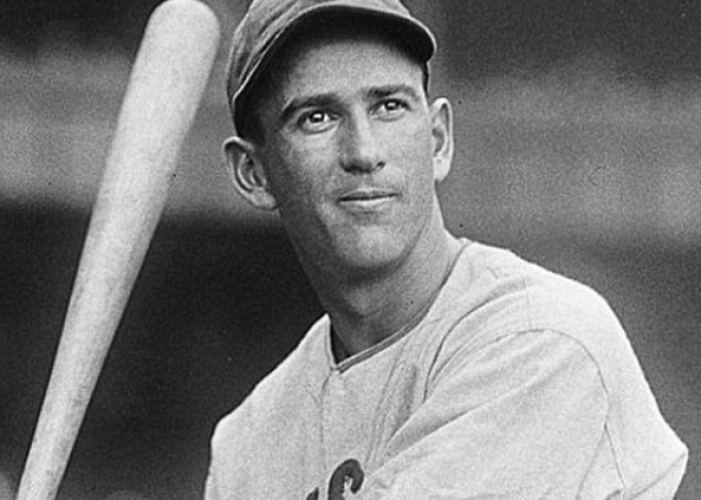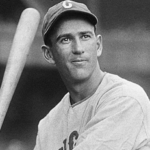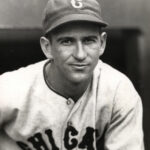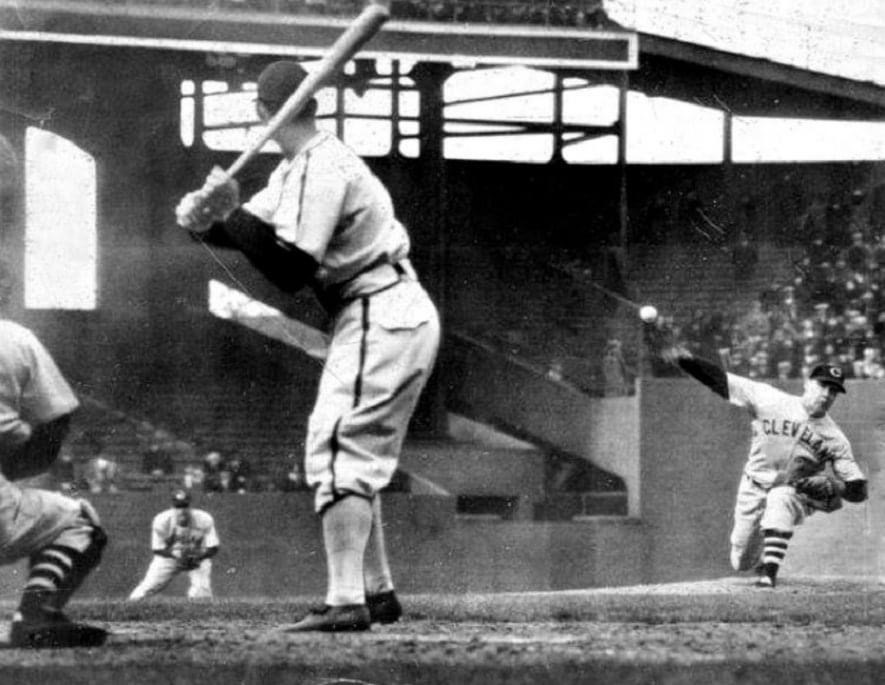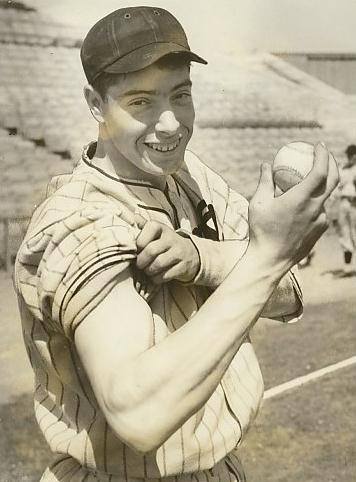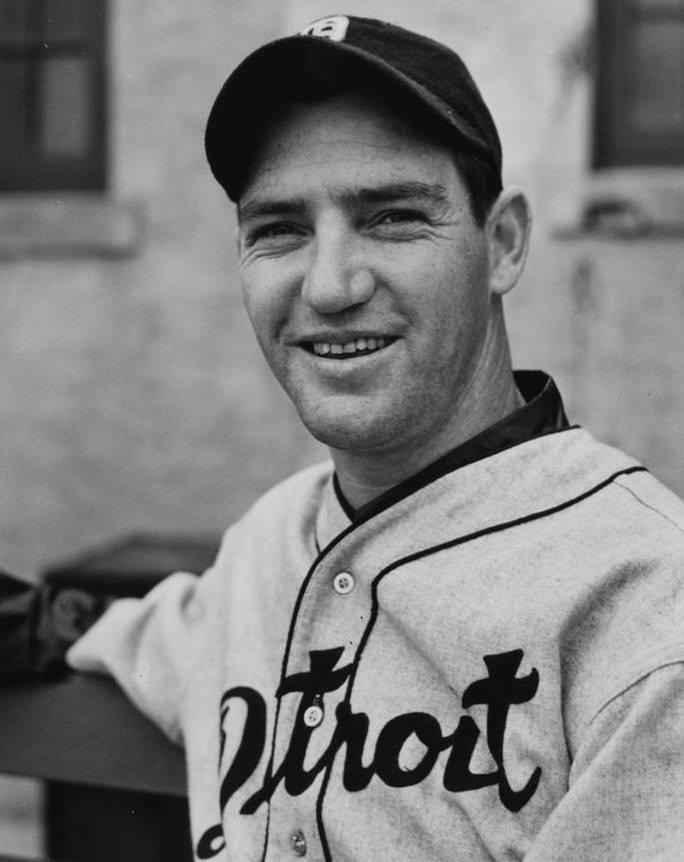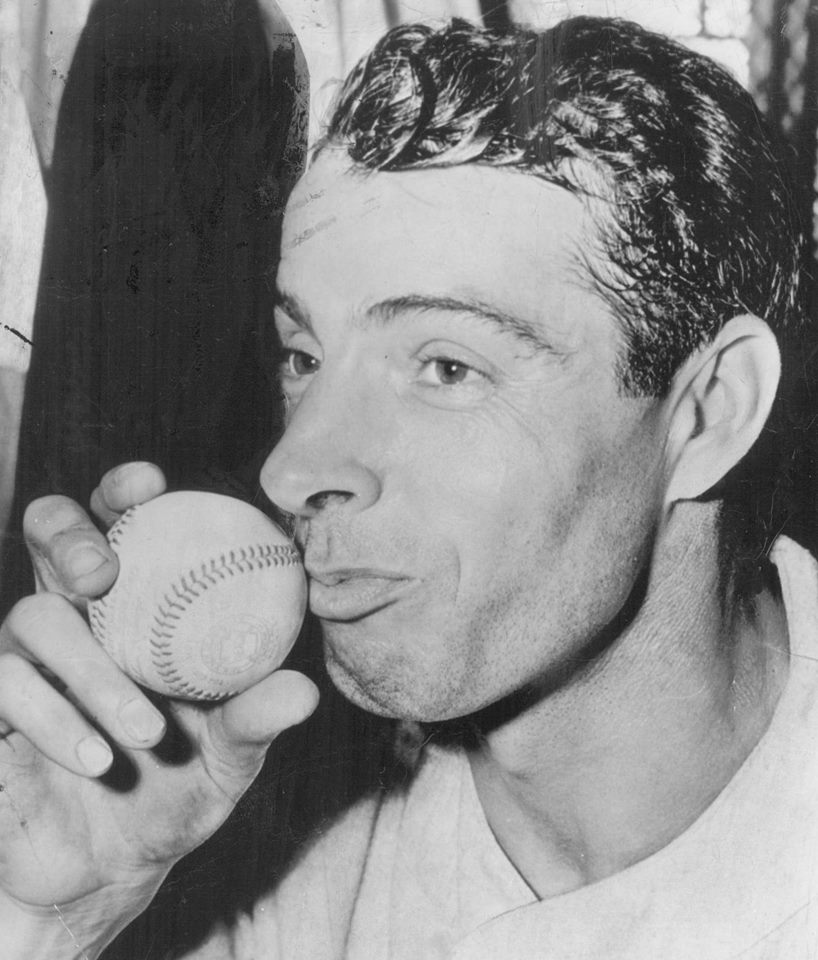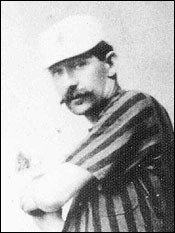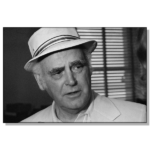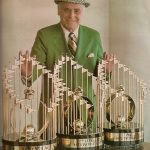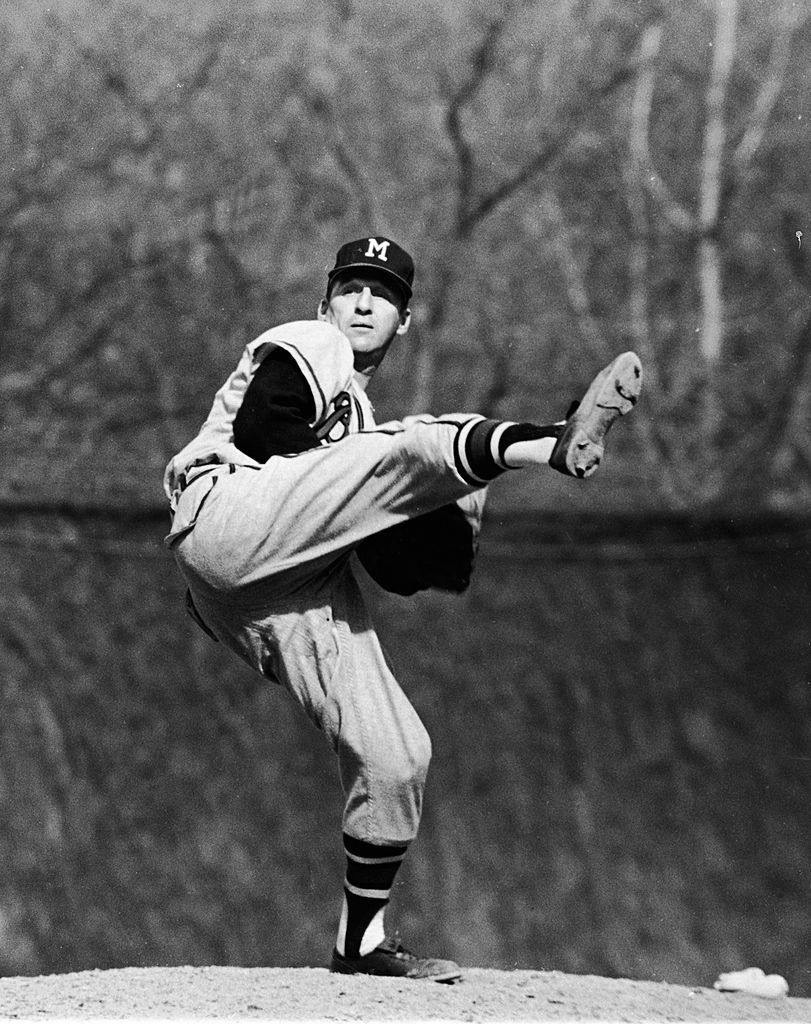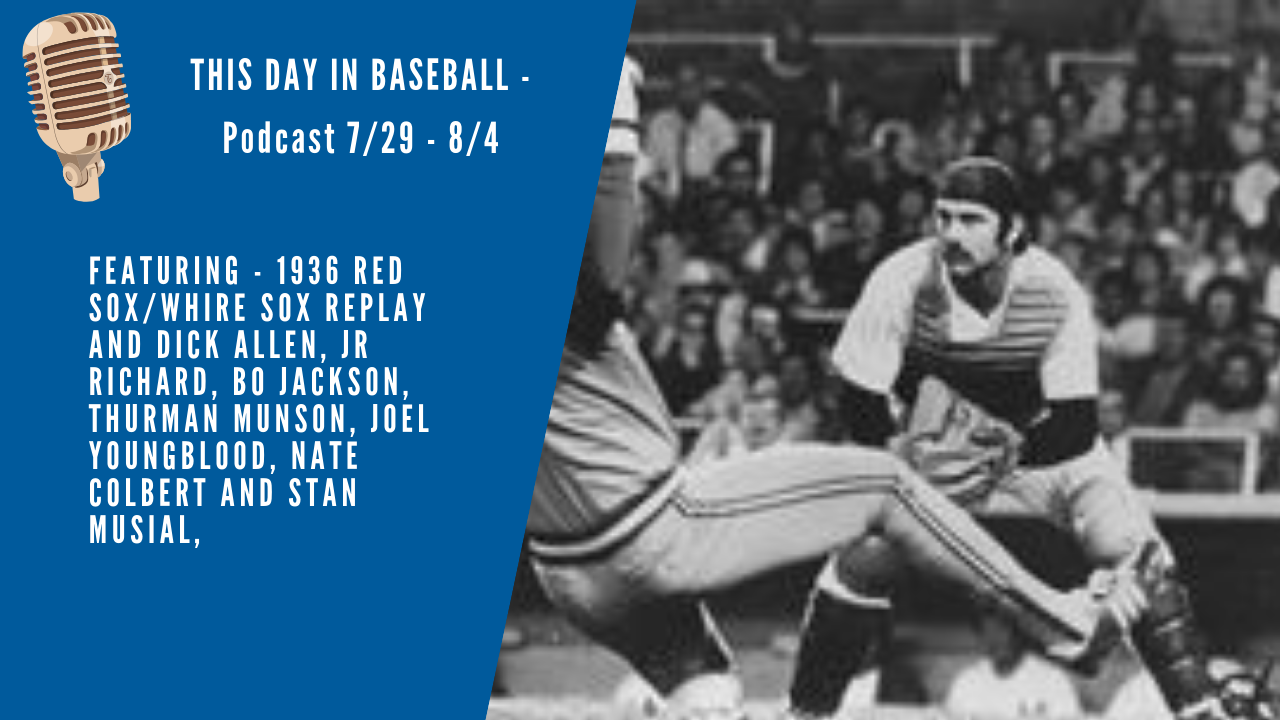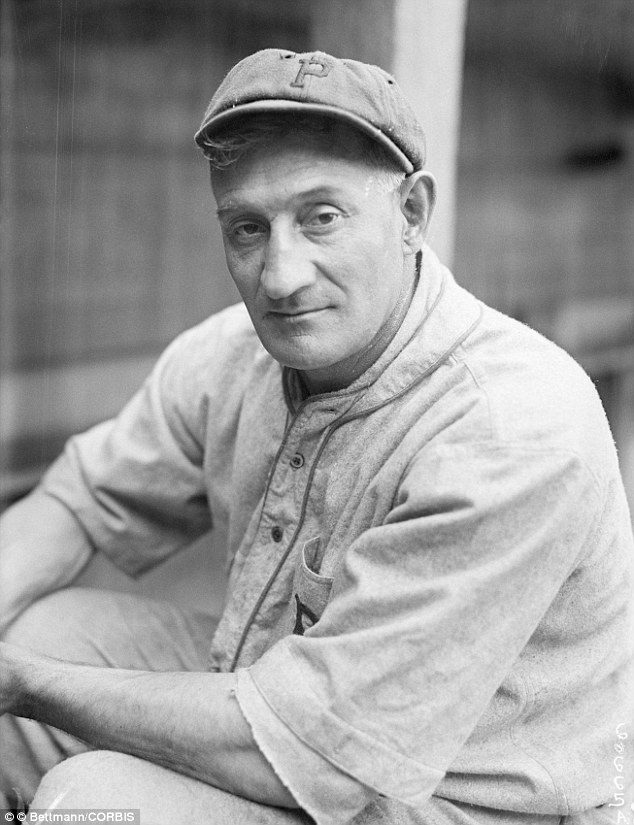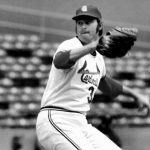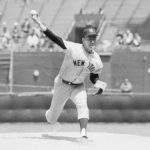Luke Appling Essentials
Positions: Shortstop and Third Baseman
Bats: Right • Throws: Right
5-10, 183lb (178cm, 83kg)
Born: April 2, 1907 in High Point, NC
Died: January 3, 1991 in Cumming, GA
Buried: Sawnee View Memorial Gardens, Cumming, GA
High School: Fulton HS (Atlanta, GA)
School: Oglethorpe University (Atlanta, GA)
Debut: September 10, 1930 ( 6,110th in MLB history)
vs. BOS 4 AB, 1 H, 0 HR, 0 RBI, 0 SB
Last Game: October 1, 1950
vs. SLB 4 AB, 1 H, 0 HR, 0 RBI, 0 SB
Hall of Fame: Inducted as Player in 1964. (Voted by BBWAA in Runoff Election on 189/201 ballots)
View Luke Appling’s Page at the Baseball Hall of Fame (plaque, photos, videos).
Full Name: Lucius Benjamin Appling
Luke Applings Baseball Reference Page
Nicknames: Old Aches and Pains or Luscious Luke
View Player Bio from the SABR BioProject
Nine Other Players Who Debuted in 1930
Luke Appling
Joe Kuhel
Pinky Higgins
Ben Chapman
Hank Greenberg
Lon Warneke
Tommy Bridges
Lefty Gomez
Dizzy Dean
The Luke Appling Teammate Team
C: Mike Tresh
1B: Joe Kuhel
2B: Jackie Hayes
3B: Jimmy Dykes
SS: Red Kress
LF: Al Simmons
CF: Wally Moses
RF: Mike Kreevich
SP: Ted Lyons
SP: Thornton Lee
SP: Red Faber
SP: Billy Pierce
RP: Sad Sam Jones
M: Jimmy Dykes
Notable Events and Chronology for Luke Appling Career
Luke Appling Biography
Though generally regarded as a mediocre fielder, Luke Appling was one of the best hitting shortstops ever to play in the American League. An exceptional contact hitter, Appling struck out only 528 times in over 10,000 plate appearances for the Chicago White Sox, while winning two batting titles and posting a lifetime mark of .310. His .388 batting average in 1936 established a 20th century record for major-league shortstops, one that was approached only by the mark of .385 posted by Pittsburgh’s Arky Vaughan one year earlier and the .381 figure compiled by Honus Wagner in 1900. Blessed with a keen batting eye, Appling accumulated more than 100 walks three times during his career, enabling him to compile a lifetime on-base percentage of just under .400. Nevertheless, Appling is often excluded from conversations involving the greatest shortstops of all time since he committed a total of 643 errors in his 20 big-league seasons, leaving him with the worst fielding percentage of any player with at least 1900 games since 1910.
Born in High Point, North Carolina on April 2, 1907, Lucius Benjamin Appling moved to Atlanta, Georgia with his family as a child. After graduating from Fulton High School, where he played baseball and football, Appling attended Oglethorpe College in Georgia for two years. Appling starred on the university’s baseball team, while also playing fullback on the football team, before leaving school during his sophomore year to pursue a career in professional baseball. He signed a contract with the Southern League Atlanta Crackers in 1929 and spent one year with the team, experiencing success at the plate but also committing 42 errors in only 104 games at shortstop. Despite his early difficulties in the field, Appling remained determined to make a successful career out of playing shortstop. He later recalled, “My Daddy was lefthanded, and I was lefthanded when I was little. In fact, I was lefthanded all the way to high school. Then I switched over to righthanded ’cause I wanted to play shortstop.”
After one full season in Atlanta, Appling joined the Chicago White Sox, who purchased his contract prior to the start of the 1930 campaign. Appling’s first year in Chicago turned out to be an unfulfilling one since he broke his finger in a morning workout and had to sit out the remainder of the year after appearing in only six games.
Slated to be Chicago’s starting shortstop when he returned to the team in 1931, Appling eventually lost his starting job after struggling both at the bat and in the field. In addition to hitting only .232, he committed 42 errors in just 76 games at shortstop. Appling didn’t fare much better in 1932, while splitting his time between shortstop, second base, and third base. Although he raised his batting average to .274, he committed a league-leading 49 errors.
Former American League batting champion Lew Fonseca took over as the team’s player-manager the following year, and he quickly set about restoring Appling’s shattered self-confidence. After being informed by Fonseca that the starting shortstop job was his no matter how much he struggled at the plate and in the field, Appling took off, embarking on the first of nine consecutive seasons in which he batted over .300. In addition to placing among the league leaders with a mark of .322, Appling drove in 85 runs and scored 90 others. Yet his struggles in the field continued, as Appling led all A.L. shortstops with 55 errors – the first of five times he topped players at his position in miscues.
Appling’s playing time in 1934 was reduced by an injured ankle that limited him to just 118 games. Still, he managed to hit .303, a figure he improved upon the following year when he batted .307, scored 94 runs, and walked a career high 122 times.
Despite breaking his leg in an exhibition game prior to the start of the 1936 campaign, Appling ended up having the greatest season of his career. In addition to leading the American League with a .388 batting average, the shortstop finished among the leaders with 128 runs batted in, 111 runs scored, 204 hits, and a .474 on-base percentage. Appling’s exceptional performance earned him his first All-Star nomination and a second-place finish to Lou Gehrig in the league MVP voting.
Appling’s lack of home run power and excellent batting eye made him a prime candidate to bat leadoff for the White Sox – a role he assumed at various times during his career. However, Chicago’s inability to provide its best player with a proper supporting cast often forced Appling to hit third in the White Sox lineup. It also prevented the shortstop from ever playing in the World Series, relegating him instead to a career spent mostly on second-division teams.
Yet, through it all, Appling continued to excel as a hitter. After batting over .300 three more times following his magnificent 1936 campaign, Appling posted the second-highest batting average of his career in 1940 – a mark of .348 that placed him second in the batting race to Joe DiMaggio. Appling also scored 96 runs and compiled a .420 on-base percentage.
Appling fell below the .300-mark for the first time in ten seasons in 1942, slumping to .262. However, he bounced back the following year, winning his second batting title with a mark of .328 and also leading the league with a .419 on-base percentage while stealing a career high 27 bases at the age of 36.
As Appling annually finished near the top of the league rankings in batting average, he continued to build on his reputation as one of the game’s finest contact hitters. In addition to rarely striking out, Appling seemed to be able to foul off the opposing pitcher’s best offerings almost at will. On one particular occasion, it is said he intentionally fouled off 10 consecutive pitches as a way of protesting ownership’s refusal to supply him with several baseballs to autograph since they were too expensive. In another instance, he hit 14 consecutive foul balls into the stands to get even with an owner who refused to give him two extra game passes.
Appling was also famous among his teammates for constantly complaining about his minor ailments. Appling’s willingness to share with others the discomfort he felt due to minor maladies such as a sore back, a weak shoulder, shin splints, or a sprained finger eventually earned him the nickname “Old Aches and Pains.” Sportswriter Maury Allen once commented, “When Appling was around, the real blunder was to ask him, ‘How do you feel?’ It would sometimes take half an hour before he stopped telling you.”
After winning the batting title in 1943, Appling spent the next two seasons in the United States Army. Originally classified 3A in the draft, Appling was 36 years old, married, and the father of two children when he was reclassified as 1A and inducted into the military on November 15, 1943. Eventually discharged on August 29, 1945, he returned to the White Sox for the final month of the 1945 campaign.
Appling served as Chicago’s starting shortstop the next four years, batting over .300 each season and compiling an on-base percentage in excess of .400 in both 1948 and 1949. However, with the White Sox beginning a youth movement in 1950, the 43-year-old Appling assumed a spot on the bench. He retired at the end of the year with a career batting average of .310, an on-base percentage of .399, 2,749 hits, 1,116 runs batted in, and 1,319 runs scored. At the time of his retirement, Appling was the all-time leader for most games played and for double plays by a major league shortstop, and the all-time leader for putouts and assists by an American League shortstop. He batted over .300 in 16 of his 20 seasons, compiled an on-base percentage over .400 on nine separate occasions, and scored more than 90 runs six times. Appling placed second in the league MVP voting twice, was selected to the All-Star Team seven times, and was named the outstanding major league shortstop by The Sporting News three times, in spite of his defensive shortcomings.
After retiring as an active player, Appling went on to manage teams in the minor leagues for seven years, winning pennants with Memphis in the Southern Association in 1953 and with Indianapolis in the American Association in 1962. He briefly managed the American League’s Kansas City Athletics as a late-season replacement for Alvin Dark in 1967. Appling also coached for the Cleveland Indians, Detroit Tigers, Baltimore Orioles, Athletics, and White Sox at various times during the 1960s, before permanently retiring from the game after serving a final stint with the White Sox.
Although never much of a home run hitter during his playing career (he hit only 45 long balls in 20 seasons), Appling hit perhaps the most memorable homer in Old-Timers Day competition in 1982. Facing Warren Spahn, the 75-year-old Appling hit a ball over the 250-foot sign in left field at RFK Stadium in Washington, D.C., prompting the Hall of Fame lefthander to applaud Appling as he rounded the bases.
In an extremely close vote, the baseball writers elected Appling to the Hall of Fame in 1964. Appling’s Hall of Fame plaque reads: “Luke Appling was a remarkably steady shortstop with an uncanny batting eye. He spent his entire 20-year career (1930 to 1950) with the White Sox and was twice voted the franchise’s greatest player by the fans. A two-time American League batting champion, he topped the .300 mark 14 times. His ability to foul off pitches became his trademark at the plate. Appling was known as “Old Aches and Pains” because of his frequent ailments.”
Luke Appling passed away in Cumming, Georgia on January 3, 1991 at the age of 83, less than nine years after he gleefully circled the bases after hitting that memorable home run against Warren Spahn on Old-Timers Day.
@ET-DC@eyJkeW5hbWljIjp0cnVlLCJjb250ZW50IjoicG9zdF90YWdzIiwic2V0dGluZ3MiOnsiYmVmb3JlIjoiTGVhcm4gTW9yZSBhYm91dCB0aGUgdGVhbXMsIHBsYXllcnMsIGJhbGwgcGFya3MgYW5kIGV2ZW50cyB0aGF0IGhhcHBlbmVkIG9uIHRoaXMgZGF0ZSBpbiBoaXN0b3J5IC0gLSAtIC0gLSAtIC0gIiwiYWZ0ZXIiOiIiLCJsaW5rX3RvX3Rlcm1fcGFnZSI6Im9uIiwic2VwYXJhdG9yIjoiIHwgIiwiY2F0ZWdvcnlfdHlwZSI6InBvc3RfdGFnIn19@
Factoids, Quotes, Milestones and Odd Facts
Played For
Chicago White Sox (1930-1950)
Managed
Kansas City Athletics (1967)
Similar: Nomar Garciappara, somewhat.
Linked: Warren Spahn
Best Season, 1936
Appling batted better than .300 on 16 occasions, winning the batting title twice: in 1943 and in 1936. His .388 average in ’36 was the highest AL mark since the offensive explosion of the 1920s. It remains the highest batting average for a shortstop in baseball history. He set career-highs in hits (204), runs (111), RBI (128), slugging (.508), and OBP (.474). he also enjoyed a career-best 27-game hitting streak.
Factoid
In 1936, Luke Appling became the first shortstop to win an American League batting title, and was also the first member of the Chicago White Sox to do so.
Where He Played: Shortstop
Milestones
Collected his 2,500th hit in 1948.
Notes
Appling’s 27-game hitting streak in 1936 was halted by Red Sox hurler Wes Ferrell on September 3rd. The streak remained a ChiSox record until broken by Albert Belle in 1997.
Injuries and Explanation for Missed Playing Time
Appling often complained of aching ankles, pink eye, the flu, and a perpetual sore back. He suffered a broken finger and a broken leg during his long career. Nevertheless, Appling usually led the White Sox in games played and, at age 42, still batted .301. For many years, he held the American League record for total games played at shortstop. Even military service failed to hurt Appling’s game. He missed every game in 1944 and all but 17 contests in 1945, yet still hit .362. Because he was a hypocondriac, he earned the nickname “Ol’ Aches and Pains.”
Hitting Streaks
27 games (1936)
27 games (1936)
Transactions
August 19, 1930: Purchased by the Chicago White Sox from the Atlanta (Southern Association)… November 9, 1950: Released by the Chicago White Sox.
Uphill to Cooperstown
Appling garnered more and more support through the years for the Hall of Fame. He finally earned selection in 1964 as a result of a rare run-off election, which ensured that the top vote-getter would be elected.
1953 – 2 votes
1955 – 3 votes
1956 – 14 votes
1958 – 7 votes
1960 – 72 votes
1962 – 48 votes
1964 – 142 votes
1964 (run off) – 189 votes
All-Star Selections
1936 AL
1939 AL
1940 AL
1941 AL
1943 AL
1946 AL
1947 AL
Replaced
Bill Cissell, a speedy middle infielder from Missouri, was the last Chicago shortstop before Appling took over for good in 1932.
Replaced By
Chico Carrasquel, the flashy fielding Venezuelan, who was later replaced by Luis Aparicio.
Best Strength as a Player
Ability to hit for a high average. There’s some evidence that Appling was a fine clutch hitter, as well. He consistently drove in more runs than would be expected from a player on his team and with his mediocre power.
Largest Weakness as a Player
His many ailments, both real and imagined.
Other Resources & Links

